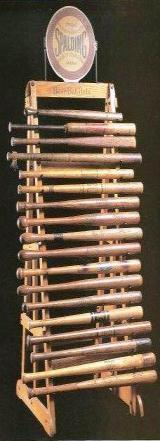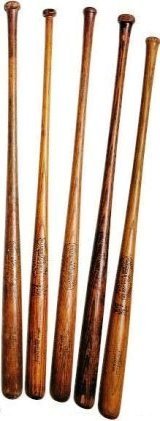 |
|||||||
What position would suit me?
Holding Runner
Anonymous asked: Hi,
Work on your footwork around the bag. Being comfortable in making adjustments to off line throws, in the dirt or air mailed throws. On any given throw, you may have to adjust to up the line, down the line, or across the line. Anticipate a bad throw, the good ones will be easy. Get to the bag quickly and set up, with both heels against the inside of the base, so that you can adjust to any throw. Quickly get off the bag and into a fielding position as the pitcher delivers the pitch. Constantly communicate with the pitcher, remind him he is coming to first base on balls hit to the right side. Tell him when you will be playing behind the runner. Anticipate bunt situations and key on the hitter's top hand. When it starts up the bat, he is looking to bunt. At first base you are at a starting disadvantage, as you have to stay and hold the runner until the pitcher starts to the plate. If you leave early, there is no one to keep the runner from running. Since you have athletic experience as a WR, catching a baseball should come naturally. It is all about soft hands and tracking the ball all the way into the glove. Your hockey goalie experience should serve you well in blocking and catching balls in the dirt. Number one defensive rule at first base, play the ball first, the base second. If the ball gets past you, more times than not it means an extra base or two for the runner, depending on the amount of foul ground territory there is. You can practice becoming comfortable with the footwork in your backyard or living room. Fold up a towel and put in on the ground or floor. Move out from the towel, visualize a ground ball hit to another infielder, get to the bag and set up, visualize any type of throw you want, adjust you feet to make that catch. Next level, go outside with it, and add someone to toss you various throws as you make the foot adjustments. When your comfortable, take it to the field and go live at a short range, working up to having someone make throws from the various positions and angles. It is all about being comfortable moving your feet, keeping your throwing side foot on the bag, all while tracking the ball into your glove. You can work picks the same way. Set up and have someone toss you balls in the dirt. You are looking to get your glove out and down, coming up and through the ball. Hitting Drills: 1. Tee into a net. 2. If you can get to a field, hit off tees out into field. Gives you an idea where the ball is going. 3. There is a ball called a "smush ball", great for hitting drills. Indestructible, soft and don't go so far that you spend all your time shagging baseballs. 4. Tossing a baseball up and hitting it is a good drill. If something will go wrong in the batter's box, it will go wrong when you throw it up to yourself and hit it. You can get a lot of swings this way by yourself; but it requires space. Below is a hitting link on the site, which will help with what to look for in the balls you are hitting. Hitting. Throwing is development of a process, for the best results. I would recommend you look at the link below for some tips on mechanics, then it becomes a process of working on those mechanics every time you throw with someone. Throwing Advanced. I would be interested to hear how things are going for you. Depending on your location and situation, there are unlimited options for drills to work mechanics. Just like any sport, the drills create the skills you take into the games. Time and correct repetitions. With some additional information, I can provide you with a detailed plan for where you would like to go. Good luck as you go forward! Yours in baseball, Rick
|
 |
||||||
 |
|||||||
|
| |||||||







